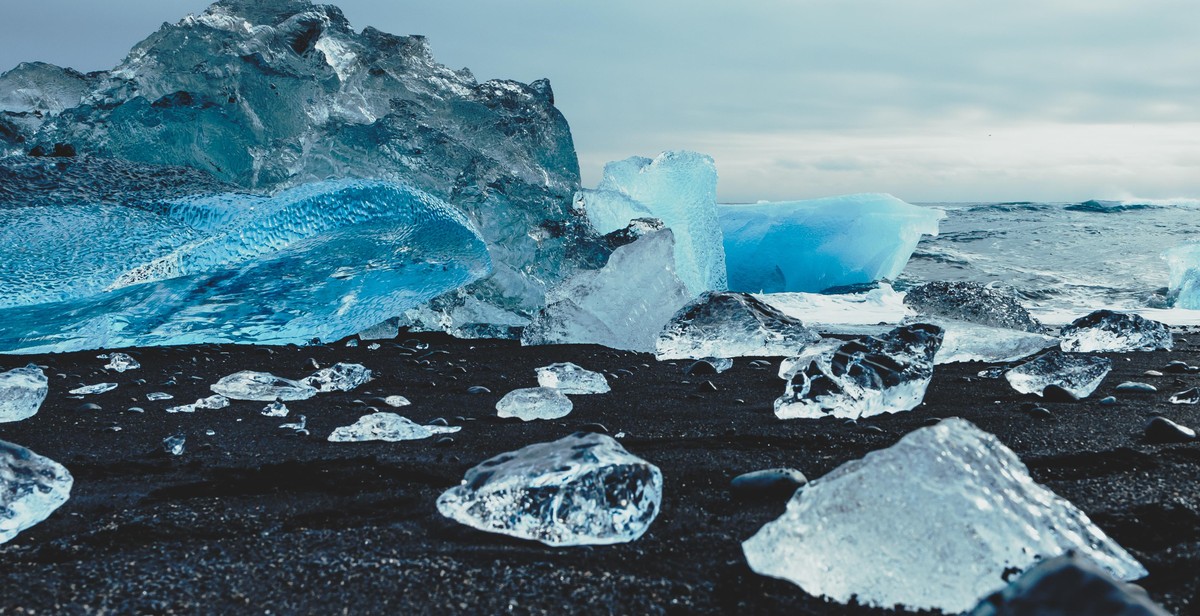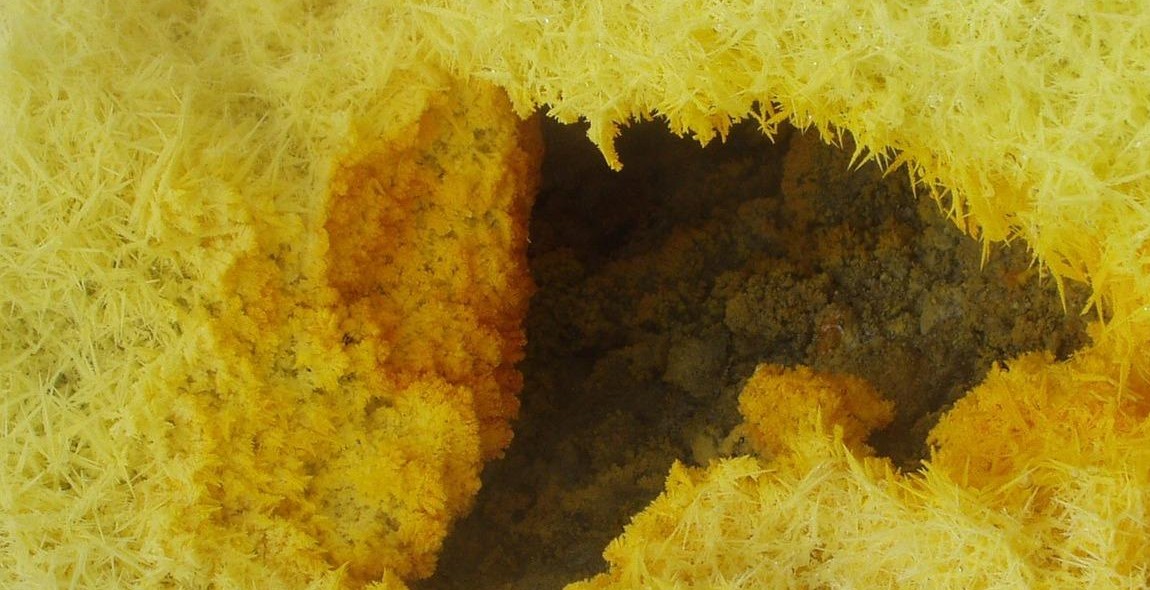How to Identify Volcanic Crystals: Recognizing Different Minerals Formed by Volcanic Processes
Volcanic crystals are fascinating and beautiful minerals that form as a result of volcanic processes. They can be found in a wide range of colors, shapes, and sizes, and are prized by collectors and geologists alike. However, identifying volcanic crystals can be a challenging task, especially for those who are new to the field. This article will provide you with some tips and tricks for recognizing different minerals formed by volcanic processes.
What are Volcanic Crystals?
Volcanic crystals are minerals that form as a result of volcanic activity. They can be found in volcanic rocks such as basalt, andesite, and rhyolite, and are often formed during the cooling and solidification of magma or lava. Volcanic crystals can be composed of a wide range of minerals, including quartz, feldspar, mica, pyroxene, and olivine, among others.
Why Identify Volcanic Crystals?
Identifying volcanic crystals is an important part of geology and can provide valuable information about the history and formation of volcanic rocks. Different minerals have different properties and can indicate the temperature, pressure, and composition of the magma or lava that formed them. Additionally, volcanic crystals are often used in jewelry and other decorative items, and identifying them can help collectors and buyers determine their value.
How to Identify Volcanic Crystals
There are several key characteristics to look for when identifying volcanic crystals:
- Color: Different minerals have different colors, which can range from clear to black, white, red, green, and more.
- Shape: Crystals can be found in a variety of shapes, including cubes, pyramids, needles, and more.
- Size: Crystal size can vary widely, from microscopic to several inches in diameter.
- Texture: Some crystals have a smooth, glassy texture, while others may be rough or contain visible inclusions.
- Hardness: The hardness of a crystal can be measured using a simple scratch test.
By paying close attention to these characteristics and using a few simple tools, such as a magnifying glass and a scratch test kit, you can learn to identify different minerals formed by volcanic processes.
Volcanic Processes and Crystal Formation
Volcanic crystals are formed from the cooling and solidification of magma or lava. This process occurs deep beneath the Earth’s surface as well as on the surface during volcanic eruptions.
Magma Formation and Cooling
Magma is formed when rock in the Earth’s mantle melts due to high temperatures and pressure. This molten rock then rises to the Earth’s surface through cracks and fissures in the crust. As the magma rises, it cools and solidifies, forming different types of igneous rocks. The rate of cooling determines the size of the crystals formed.
Slow Cooling
Slow cooling occurs when magma cools slowly beneath the Earth’s surface. This results in the formation of large crystals. For example, granite is an igneous rock that forms from slow cooling magma. It contains large crystals of quartz, feldspar, and mica.
Fast Cooling
Fast cooling occurs when magma cools quickly on the Earth’s surface. This results in the formation of small crystals or no crystals at all. For example, obsidian is an igneous rock that forms from fast cooling lava. It has a smooth, glassy texture and no visible crystals.
Crystallization and Mineral Formation
When magma cools and solidifies, the atoms and molecules within it arrange themselves into a crystalline structure. This results in the formation of various minerals. The type of mineral formed depends on the chemical composition of the magma.
- Quartz – forms from magma that is rich in silica
- Feldspar – forms from magma that is rich in aluminum and potassium
- Mica – forms from magma that is rich in iron and magnesium
- Pyroxene – forms from magma that is rich in calcium and magnesium
- Amphibole – forms from magma that is rich in iron, magnesium, and calcium
Volcanic crystals can also form from the gases that are released during volcanic eruptions. These gases can cause rapid cooling and solidification of lava, resulting in the formation of tiny crystals. This can be seen in volcanic glass, which is formed from lava that has cooled too quickly for crystals to form.
| Mineral | Color | Composition |
|---|---|---|
| Quartz | Clear, white, pink, brown, black | SiO2 |
| Feldspar | White, pink, gray, brown | Al2O3 + K2O + Na2O |
| Mica | Black, brown, green, white | Fe, Mg, Al, SiO4 |
| Pyroxene | Green, black, brown | Ca, Mg, Fe, SiO4 |
| Amphibole | Black, green, brown | Fe, Mg, Ca, SiO4 |
Identifying Volcanic Crystals
Volcanic crystals are formed through the cooling and solidification of molten lava. These crystals can be identified by their unique characteristics such as color, transparency, crystal shape and structure, hardness, cleavage, and specific gravity.
Color and Transparency
The color and transparency of a volcanic crystal can provide insight into its composition. For example, a crystal that is black or dark brown in color may be made of basalt, while a crystal that is green may be made of olivine. Transparent crystals, such as quartz, are often found in volcanic rocks like rhyolite and dacite.
Crystal Shape and Structure
Volcanic crystals can have a variety of shapes and structures. Some crystals, like pyroxene, have a long, thin shape, while others, like feldspar, have a blocky shape. Crystals can also form in clusters, like in the case of zeolites.
Hardness and Cleavage
The hardness and cleavage of a volcanic crystal can also help identify it. Hardness is measured on the Mohs scale, with diamonds being the hardest mineral at 10, and talc being the softest at 1. For example, quartz has a hardness of 7, while feldspar has a hardness of 6. Cleavage refers to the way a crystal breaks, and some minerals, like mica, have a perfect cleavage, while others, like quartz, have no cleavage at all.
Specific Gravity
Specific gravity refers to the density of a mineral compared to the density of water. This characteristic can help distinguish between similar-looking minerals. For example, quartz and feldspar look similar, but quartz has a higher specific gravity, making it heavier than feldspar.
| Characteristic | Examples |
|---|---|
| Color and Transparency | Basalt, Olivine, Quartz |
| Crystal Shape and Structure | Pyroxene, Feldspar, Zeolites |
| Hardness and Cleavage | Quartz, Feldspar, Mica |
| Specific Gravity | Quartz, Feldspar |
Overall, identifying volcanic crystals requires a combination of observation, knowledge, and experience. By paying attention to the unique characteristics of each crystal, you can gain a better understanding of the volcanic processes that created them.

Common Volcanic Crystals and Minerals
Volcanic eruptions are known for producing a wide range of minerals and crystals. Some of the most common volcanic crystals and minerals include:
Quartz
Quartz is one of the most abundant minerals on Earth and can be found in many volcanic rocks. It is typically clear or white and has a glassy appearance. Quartz is often used in jewelry and can be found in many different colors.
Feldspar
Feldspar is another common mineral found in volcanic rocks. It is typically white or gray and has a dull appearance. Feldspar is often used in ceramics and glassmaking.
Mica
Mica is a shiny mineral that is often found in volcanic rocks. It is typically brown or black and has a layered appearance. Mica is often used in electronics and insulation.
Pyroxene
Pyroxene is a dark-colored mineral that is often found in volcanic rocks. It is typically black or dark green and has a glassy appearance. Pyroxene is often used in construction materials and as a gemstone.
Amphibole
Amphibole is a dark-colored mineral that is similar in appearance to pyroxene. It is typically black or dark green and has a glassy appearance. Amphibole is often used in construction materials and as a gemstone.
Olivine
Olivine is a green-colored mineral that is often found in volcanic rocks. It has a glassy appearance and is often used in jewelry. Olivine is also known as peridot.
Garnet
Garnet is a red-colored mineral that is often found in volcanic rocks. It has a glassy appearance and is often used in jewelry. Garnet is also known as the birthstone for January.
Sulfur
Sulfur is a yellow-colored mineral that is often found in volcanic areas. It has a powdery appearance and a distinct smell. Sulfur is often used in the manufacturing of sulfuric acid and fertilizers.
Conclusion
These are just a few of the many volcanic crystals and minerals that can be found around the world. By understanding the properties of these minerals, you can better identify and appreciate the unique beauty of volcanic rocks.

Conclusion
Recognizing different minerals formed by volcanic processes is a fascinating and challenging task. However, with the right tools, knowledge, and experience, anyone can learn how to identify volcanic crystals with confidence.
First, it’s essential to understand the geological processes that create volcanic crystals. As we’ve seen, different minerals form under different conditions, and knowing these conditions can help you narrow down your search.
Secondly, it’s crucial to have the right tools on hand. A hand lens, a streak plate, and a magnet are essential items for any geologist or rockhound. Additionally, knowing how to use these tools properly can make a significant difference in your ability to identify volcanic crystals accurately.
Finally, practice, practice, practice! The more time you spend examining rocks and minerals, the better you’ll become at identifying them. Don’t be afraid to ask for help from other geologists or mineral collectors, and always keep an open mind when it comes to learning about new minerals.
Key takeaways
- Volcanic crystals are formed through various geological processes, and different minerals form under different conditions.
- Having the right tools, such as a hand lens, streak plate, and magnet, is crucial for identifying volcanic crystals.
- Practice and experience are essential for becoming proficient at identifying volcanic crystals.
By following these tips and taking the time to learn about volcanic crystals, you’ll be well on your way to becoming a skilled mineral collector or geologist.
